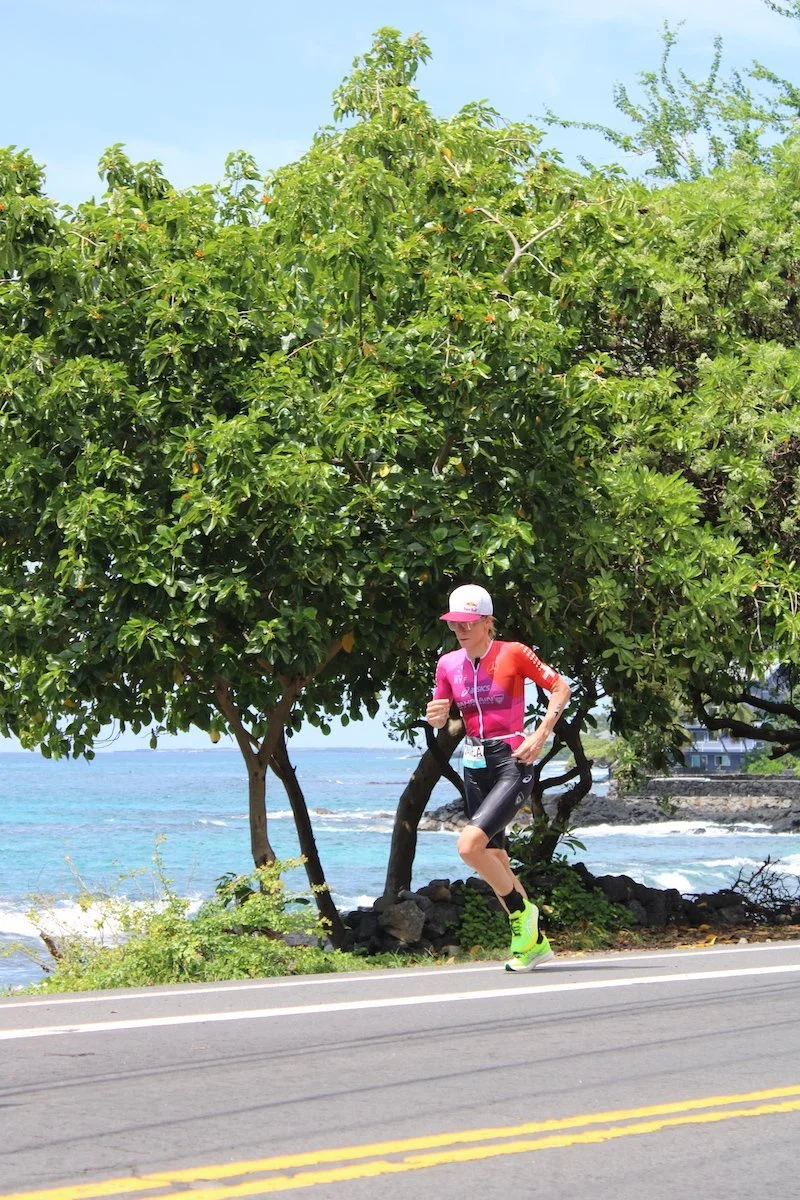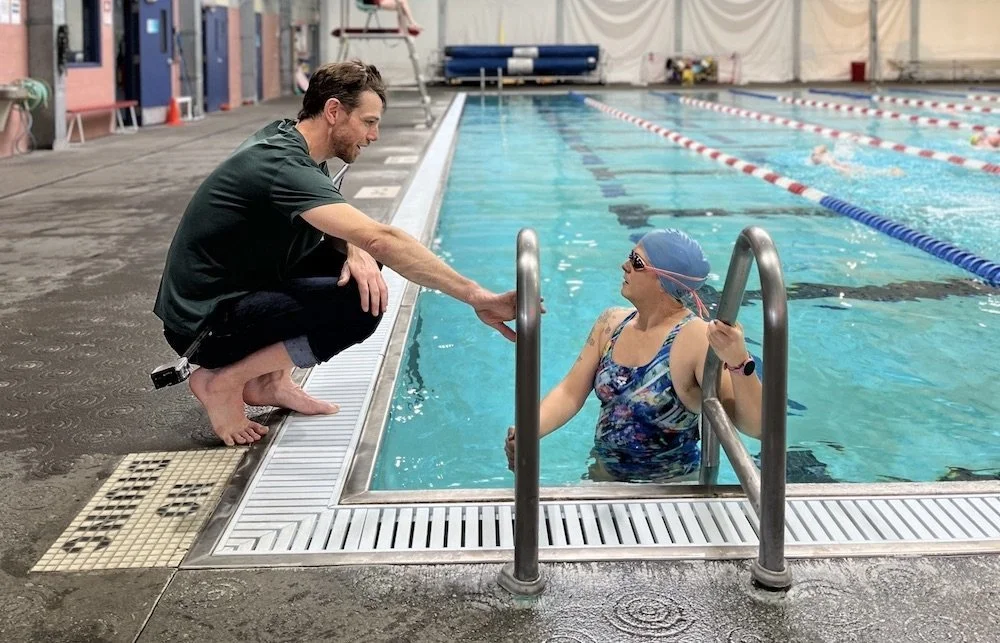From Start to Finish: Crafting Your Half Ironman Training Plan
Half ironman training plan is your roadmap to conquering the intense challenge of swimming, biking, and running over long distances—all in one day. For those eager to take on an IRONMAN 70.3 event, a training plan is key to building the endurance required to swim 1.9km, bike 90km, and run 21.1km. Whether you're a seasoned athlete or just starting your triathlon journey, a structured plan helps balance your training with a busy lifestyle, ensuring you achieve peak performance on race day.
Key Steps in a Half Ironman Training Plan:
Establish a solid base of aerobic fitness
Include consistent workouts across swim, bike, and run disciplines
Implement frequent recovery and rest periods
Gradually increase volume and intensity to prep for race conditions
I'm Christopher Bagg, an experienced coach and former professional triathlete. With a career in endurance sports, I've crafted many a half ironman training plan, supporting athletes in reaching their personal milestones. In the sections that follow, we'll solve the essential elements that make up an effective training plan.
Understanding the Half Ironman Distance
A Half Ironman, also known as IRONMAN 70.3, is a formidable challenge that combines three disciplines: a 1.9km swim, a 90km bike ride, and a 21.1km run. Each segment demands its own set of skills and endurance, making it crucial to understand the unique aspects of each.
1.9km Swim
The swim portion of a Half Ironman is typically held in open water, such as a lake or ocean. Swimming 1.9km requires more than just physical ability; it demands mental focus and efficient technique. Unlike pool swimming, open-water conditions can be unpredictable, with factors like waves, currents, and visibility playing significant roles.
Tip: Practice sighting, or looking up to steer, during your training swims to ensure you stay on course during the race.
90km Bike
The bike leg is the longest part of the race, covering 90km. This segment is not just about speed; it’s about managing your energy efficiently to conserve strength for the run. The terrain can vary from flat roads to challenging hills, requiring both endurance and power.
Tip: Incorporate hill training and long rides into your half ironman training plan to build strength and stamina.
21.1km Run
The final leg is a 21.1km run, equivalent to a half marathon. After swimming and biking, this run tests your endurance and mental resilience. Pacing is crucial here; going out too fast can lead to fatigue, while a steady pace can help you finish strong.
Tip: Practice "brick workouts"—back-to-back bike and run sessions—to simulate race conditions and improve your transition skills.
The Half Ironman distance is a true test of endurance and determination. Each segment requires specific training and preparation, making a well-structured training plan essential for success. In the next section, we'll explore how to structure a training plan that balances these demands while fitting into your lifestyle.
Structuring Your Half Ironman Training Plan
Creating a half ironman training plan involves breaking down your preparation into distinct phases: base, build, peak, and taper. Each phase targets different aspects of your fitness and skills, ensuring you’re ready for race day.
Base Phase
Goal: Build a strong aerobic foundation.
During the base phase, focus on developing your aerobic engine. This means lots of low-intensity, high-volume workouts. Aim to train consistently at basic aerobic intensities for about 80% of your training time. This phase typically lasts 4-8 weeks, depending on your starting fitness level.
Key Activities:
Long, easy swims, bikes, and runs
Focus on form and endurance
Include strength training to build overall fitness
Tip: Consistency is key. Train almost every day, but keep the intensity low to avoid burnout.
Build Phase
Goal: Improve your strength and speed.
In the build phase, you’ll start incorporating more intensity into your workouts. This phase helps improve your race pace, threshold, and VO2Max. It usually lasts 4-6 weeks.
Key Activities:
Interval training sessions for swimming, cycling, and running
Hill workouts to build strength
Longer brick workouts to practice transitions
Tip: Balance intensity with recovery. Listen to your body and adjust your plan if you feel overly fatigued.
Peak Phase
Goal: Prepare your body for race-specific demands.
The peak phase is where you fine-tune your training to match race conditions. You’ll focus on race pace and specific skills like nutrition and hydration strategies. This phase typically lasts 2-4 weeks.
Key Activities:
Simulate race conditions with longer brick workouts
Practice nutrition and hydration strategies
Fine-tune pacing strategies
Tip: Use this time to iron out any kinks in your race day plan. Practice everything from gear setup to nutrition.
Taper
Goal: Rest and recover for race day.
The taper phase is crucial for recovery. Reduce your training volume while maintaining some intensity to stay sharp. This phase usually lasts 1-2 weeks.
Key Activities:
Shorter, high-intensity workouts
Focus on rest, sleep, and nutrition
Mental preparation and visualization
Tip: Resist the urge to overtrain. Trust the process and allow your body to recover fully before race day.
Each phase of your half ironman training plan plays a critical role in preparing you for the race. By following this structured approach, you’ll build the endurance, strength, and confidence needed to tackle the Half Ironman distance. Next, we'll dive into the key components of a training plan, including swimming, cycling, running, and more.
Key Components of a Half Ironman Training Plan
When preparing for a Half Ironman, it's crucial to focus on the key components of swimming, cycling, and running, along with integrating brick workouts and proper nutrition. Each of these elements plays a vital role in your overall success.
Swimming
Swimming is often the first leg of a Half Ironman, covering a distance of 1.9 kilometers. To tackle this, you'll need to build both endurance and technique.
Key Tips:
Practice open-water swimming to get comfortable with race conditions.
Focus on technique drills to improve efficiency.
Include interval training to build speed and stamina.
Example Workout:
Warm-up: 10 minutes easy swim
Main Set: 4 x 200 meters at race pace, with 30 seconds rest
Cool down: 5 minutes easy swim
Cycling
Cycling is the longest segment, with a 90-kilometer ride. Building strength and endurance on the bike is essential.
Key Tips:
Incorporate hill climbs and interval training to boost power.
Focus on long rides to build stamina.
Practice bike handling skills for safety and efficiency.
Example Workout:
Warm-up: 15 minutes easy spin
Main Set: 3 x 10 minutes at tempo pace, with 5 minutes easy spin between
Cool down: 10 minutes easy spin
Running
The final leg is a 21.1-kilometer run. Here, endurance and pacing are key.
Key Tips:
Build up running mileage gradually to avoid injury.
Include tempo runs and speed work to improve pace.
Practice transitions from cycling to running to simulate race conditions.
Example Workout:
Warm-up: 10 minutes easy jog
Main Set: 5 x 1 kilometer at threshold pace, with 2 minutes rest
Cool down: 10 minutes easy jog
Brick Workouts
Brick workouts involve back-to-back training sessions, usually cycling followed by running, to simulate race transitions.
Key Tips:
Start with shorter sessions and gradually increase the duration.
Focus on smooth transitions between disciplines.
Use these workouts to test nutrition and hydration strategies.
Example Workout:
Bike: 40 kilometers at moderate pace
Transition quickly to:
Run: 5 kilometers at race pace
Nutrition
Proper nutrition is crucial for fueling your body during training and on race day.
Key Tips:
Follow a balanced diet rich in carbohydrates, proteins, and fats.
Practice race nutrition during long workouts to find what works best for you.
Stay hydrated before, during, and after workouts.
Example Nutrition Plan:
Pre-Workout: Light meal with carbs and protein
During Workout: Energy gels or bars every 45 minutes, with water or sports drink
Post-Workout: Recovery drink with protein and carbs
By incorporating these key components into your half ironman training plan, you'll be well-prepared to tackle each leg of the race with confidence. Next, we'll explore specific training plans for beginners, including 20-week and 8-week options to suit different starting points.
Half Ironman Training Plan for Beginners
Training for a Half Ironman can seem daunting, but with a structured plan, you can build the endurance and strength needed to succeed. Here, we'll explore different plans that cater to various starting points: a 20-week plan, a 6-month plan, and an 8-week plan.
20-Week Plan
A 20-week plan is ideal for beginners who are new to triathlons or returning to fitness. This plan gradually builds your endurance and confidence through three phases: base, build, and peak.
Base Phase (Weeks 1-8):
Focus on building a strong aerobic foundation.
Include 3 swims, 3 bike rides, and 3 runs per week.
Aim for moderate intensity, gradually increasing volume.
Build Phase (Weeks 9-16):
Introduce more race-specific workouts.
Incorporate brick sessions to practice transitions.
Increase intensity and duration of workouts.
Peak Phase (Weeks 17-20):
Fine-tune race pace and strategies.
Taper in the final weeks to ensure you're rested for the race.
Emphasize nutrition and recovery.
6-Month Plan
For those who prefer a more extended preparation, a 6-month plan allows for a more gradual increase in intensity and volume. This plan is perfect for those starting from a lower fitness level or who want to avoid the risk of injury.
First 3 Months:
Focus on building endurance with low-intensity workouts.
Gradually increase workout duration, especially for long rides and runs.
Incorporate strength training to build muscular endurance.
Final 3 Months:
Transition to more specific race preparation.
Include higher intensity sessions and race simulations.
Prioritize recovery and adjust volume based on fatigue levels.
8-Week Plan
An 8-week plan is more intense and suitable for athletes who already have a solid fitness base. This plan focuses on sharpening your skills and endurance in a shorter time frame.
Weeks 1-4:
Increase workout frequency with higher intensity sessions.
Focus on interval training for speed and efficiency.
Practice brick workouts weekly.
Weeks 5-8:
Fine-tune pacing and nutrition strategies.
Include race simulations to build confidence.
Taper in the final week to ensure peak performance on race day.
Choosing the Right Plan
Selecting the right half ironman training plan depends on your current fitness level, experience, and time availability. Whether you choose a 20-week, 6-month, or 8-week plan, consistency and commitment are key. Remember to listen to your body, prioritize recovery, and adjust your plan as needed to ensure a successful race day.
Next, we'll address some frequently asked questions about Half Ironman training to help you further tailor your preparation.
Frequently Asked Questions about Half Ironman Training
How many weeks do you need to train for a Half Ironman?
Training for a Half Ironman typically requires a commitment of 20 weeks. This period is divided into several phases to optimize your preparation:
Base-Training Phase (Weeks 1-8): Focus on building a strong aerobic base. This includes regular swimming, cycling, and running sessions at a moderate intensity to improve your endurance.
Build Phase (Weeks 9-16): This phase ramps up the intensity and includes more race-specific workouts. You'll engage in brick sessions, where you practice transitioning between cycling and running, to prepare for race day conditions.
Race-Specific Block (Weeks 17-18): Fine-tune your pace and strategies. The workouts become more specific to the demands of the Half Ironman, focusing on maintaining your target race pace.
Taper (Weeks 19-20): Reduce your training volume to allow your body to recover and be fresh for the race. This is a crucial phase to ensure you’re rested and ready.
What's a good beginner Half Ironman time?
For beginners, a good Half Ironman time can vary widely based on individual fitness levels and experience. However, many aim for around 5 to 7 hours. Breaking it down:
Swim: A steady pace might see you completing the swim in about 45-60 minutes.
Bike: Aim for around 2.5 to 3.5 hours for the bike segment, maintaining a comfortable speed.
Run: Aiming for a sub-90-minute half marathon is ambitious but achievable with consistent training.
How do you structure a 70.3 training plan?
Structuring a 70.3 training plan involves a balance of endurance, speed, and recovery:
Strength Training: Incorporate strength sessions to build muscular endurance and reduce injury risk. Focus on core exercises and leg strength.
Easy Bike Rides: Include long, easy rides to build endurance. These sessions should be at a comfortable pace where you can still hold a conversation.
Swim Intervals: Focus on intervals during swim sessions to improve speed and efficiency. This involves alternating between fast and slow paces.
Tempo Rides: Include tempo rides in your training, where you maintain a challenging but sustainable pace. This helps mimic race conditions and improve your stamina.
The key to a successful half ironman training plan is consistency and listening to your body. Adjust your plan as needed, prioritize recovery, and stay committed to your training schedule. Next, we’ll dig into personalized guidance and community engagement offered by Campfire Endurance.
Conclusion
At Campfire Endurance, we believe that training for a Half Ironman is more than just following a plan. It's about personalized guidance and community engagement that keeps you motivated and on track.
Our coaches focus on building long-term relationships with athletes. We understand that every athlete is unique, and so are their training needs. By offering personalized feedback and support, we help you adjust your half ironman training plan to fit your lifestyle and goals.
But training isn't just about the individual effort—it's about the community you build along the way. Joining our vibrant community means connecting with other athletes who share your passion and drive. Whether you're sharing tips, celebrating milestones, or simply enjoying the camaraderie, being part of a community can make all the difference.
Our holistic approach ensures you're not just physically prepared but also mentally ready for race day. With Campfire Endurance, you're not alone on this journey. You're part of a team that supports and encourages each other.
Ready to take the next step in your triathlon journey? Explore our training plans and become part of our community by visiting our Training Plans page. Let's achieve excellence together!




